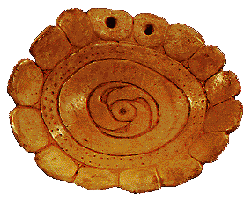Indians Before Europeans
This section summarizes two perspectives on the history of Arkansas Indians before Europeans. The Indians’ own historical perspective is based on stories and ceremonies passed from generation to generation. The temporal framework for this perspective extends from the present back to a time when primordial events that formed the present world began to take place.
The perspective developed by academic scholars (some of whom are American Indians), is organized within a chronological time frame beginning about 30,000 years ago and is based primarily on the study of archeological remains. Note: For easy reading and cross-referencing with other Arkansas Archeological Survey publications, all references to chronology in the following discussions of the pre-contact history of American Indians are given in years B.C. or A.D. Archeologists often discuss chronology in terms of “radiocarbon years before present” (or, RCYBP) or they may simply use the term "years ago," which yield slightly different dates. The following table gives general correlations for these three chronological systems.
Chronology Table
Adapted from Table A.1: Radiocarbon ages calibrated to mid-points of likeliest calendar years ago, in The Early Settlement of North America: The Clovis Era by Gary Haynes (2002, Cambridge University Press) with additional information from INTCAL98 Radiocarbon Age Calibration, 24,000 – 0 cal BP, by M. Stuiver, P. J. Reimer, E. Bard, J. W. Beck, G. S. Burr, K. A. Hughen, B. Kromer, G. McCormac, J. van der Plicht, and M. Spurk. Radiocarbon 40(3):1041-1083. |
||||||||||||||||||||||||||||||||||||||||||||||||||||||||||||||||||||||||||||||||
 |

|
